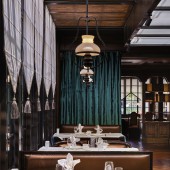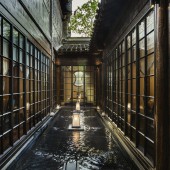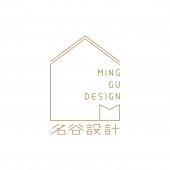Hong Maison Restaurant Restaurant by Jaco Pan |
Home > Winners > #67647 |
 |
|
||||
| DESIGN DETAILS | |||||
| DESIGN NAME: Hong Maison Restaurant PRIMARY FUNCTION: Restaurant INSPIRATION: Passing through the memorial gateway of the historical avenue, visitors arrive at the Jianzi Lane in the east after thirty-meter walk. ascending the stairs to reach the main door, there apparently standing an 1.67m wide door open to the interior. The entrance-hall with a semi-enveloped screen welcomes you to enter and appreciate the eclectic design with a mixture of affection and style, while incorporating the signature of the community. UNIQUE PROPERTIES / PROJECT DESCRIPTION: In early 2016, the guest paid his visit to the architect, hopefully to create a flagship restaurant in the south of Nanjing City. The unforgettable charm sparkling in past Republican China essence was anchored in the space, called Hong Maison Restaurant. The place appears appropriate, featuring a sophisticated newly-built bridge joining two pavilions separately located in the sides of north and south. OPERATION / FLOW / INTERACTION: For the architect, every development means a familiar process of reviewing what has been gained in his past intervention. From the initial brainstorm to feasible modification, an accomplished method belonging to a time should be applied in the realm of its technological growth and present it in aesthetic and artistic ways. In his opinion, space is generated according to constraining of a sequence of orders, but detail hides in the logic subdivision. A misunderstood detailing practice by craftsman would march forward beyond detailing creation through racking their brains. It’s possible anyway and it happens again and again in reality, so innovation needs ‘breakthrough’. An idea of systematical construction is much similar to the course of birth and growth of natural creations. The basic gene in such idea should be interpreted and divided properly. Conceived objects succeed conceptual blueprint, which has been confirmed for a long time and evolving to itself wonders. PROJECT DURATION AND LOCATION: The project started in 2016 in Nanjing and finished in June 2078 in Nanjing. FITS BEST INTO CATEGORY: Interior Space and Exhibition Design |
PRODUCTION / REALIZATION TECHNOLOGY: Materials: wood, plaster, terrazzo, marble. SPECIFICATIONS / TECHNICAL PROPERTIES: Area: 1,700sqm TAGS: restaurant RESEARCH ABSTRACT: The pavilion in the south features layout of ‘mirrored lobby’ originating from the formation of traditional architecture. The corridor in the east orientation was maintained to run through the vertical sides after transformation. However, the rest of rooms comply with structural beams and columns, segmented into four free-standing dining spaces while surrounding skylight inside. The layout of the skylight was re-arranged and back to the basic position of the columns, reformed into a pool of tranquil water waving outside of the building. A number of hurricane lanterns floats on the water, catering to the interiors harmoniously. Passerby going through and guests taking seats both take an exciting experience of the architecture reflecting on the flowing water, ethereality and tranquility. Oppression and depression from traditional architecture interiors was eliminated ultimately. CHALLENGE: The dining area on the ground floor was separated into two halls, connected by a long passageway. The passageway keeps the principle of ‘through space’ to get light in the dark. Positive phototropism ensures primarily important dining experience when implementing the rule. The West Hall was transformed from the existing architecture, preserving the main wood structure in the courtyard. An optic center for the area was developed by re-organising microcosmic courtyard. Meanwhile, reverse supporting structure makes the extension strip off the floor of the existing courtyard to form a much more lithesome volume - as if a modern art installation was set in the classic courtyard. Double-glazed ceiling is used to filter light and save energy in the same time, and luscious and enough natural light is introduced into the interior when it’s sunny day; but artificially projected beam from outside to light up rooms with beautifully overlapped shadow. It’s easy to observe the wonderful scene that dropping water ripples on the surface of ceiling while it’s rainy day. ADDED DATE: 2018-03-29 02:27:38 TEAM MEMBERS (1) : Jaco Pan, Le Quan. IMAGE CREDITS: Images in the project photographed by Guomin Lee; floor plans were made by the architect. PATENTS/COPYRIGHTS: Copyrights belong to Jaco Pan, 2017. |
||||
| Visit the following page to learn more: http://www.minggu-design.net | |||||
| AWARD DETAILS | |
 |
Hong Maison Restaurant Restaurant by Jaco Pan is Winner in Interior Space and Exhibition Design Category, 2017 - 2018.· Read the interview with designer Jaco Pan for design Hong Maison Restaurant here.· Press Members: Login or Register to request an exclusive interview with Jaco Pan. · Click here to register inorder to view the profile and other works by Jaco Pan. |
| SOCIAL |
| + Add to Likes / Favorites | Send to My Email | Comment | Testimonials | View Press-Release | Press Kit |
Did you like Jaco Pan's Interior Design?
You will most likely enjoy other award winning interior design as well.
Click here to view more Award Winning Interior Design.








